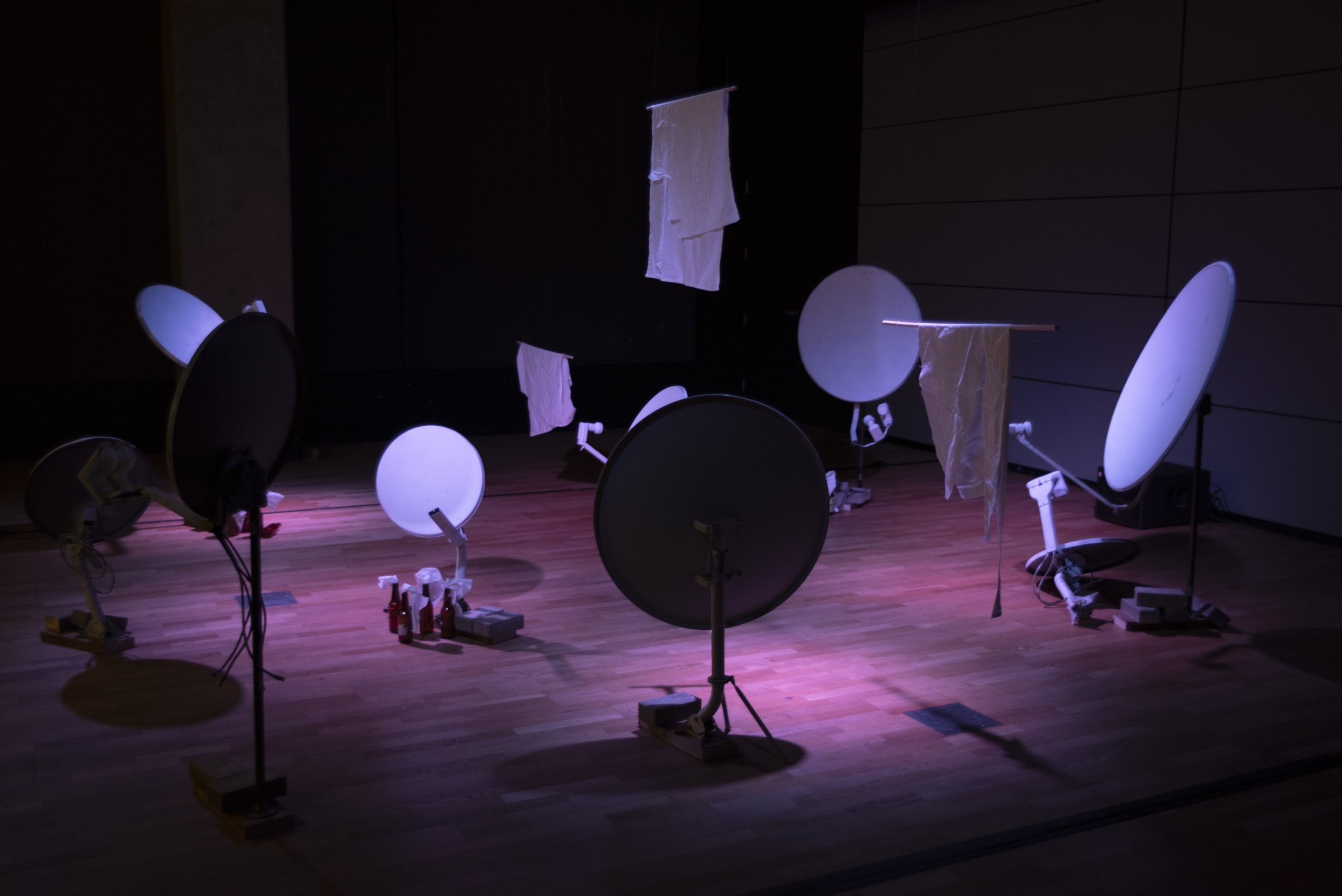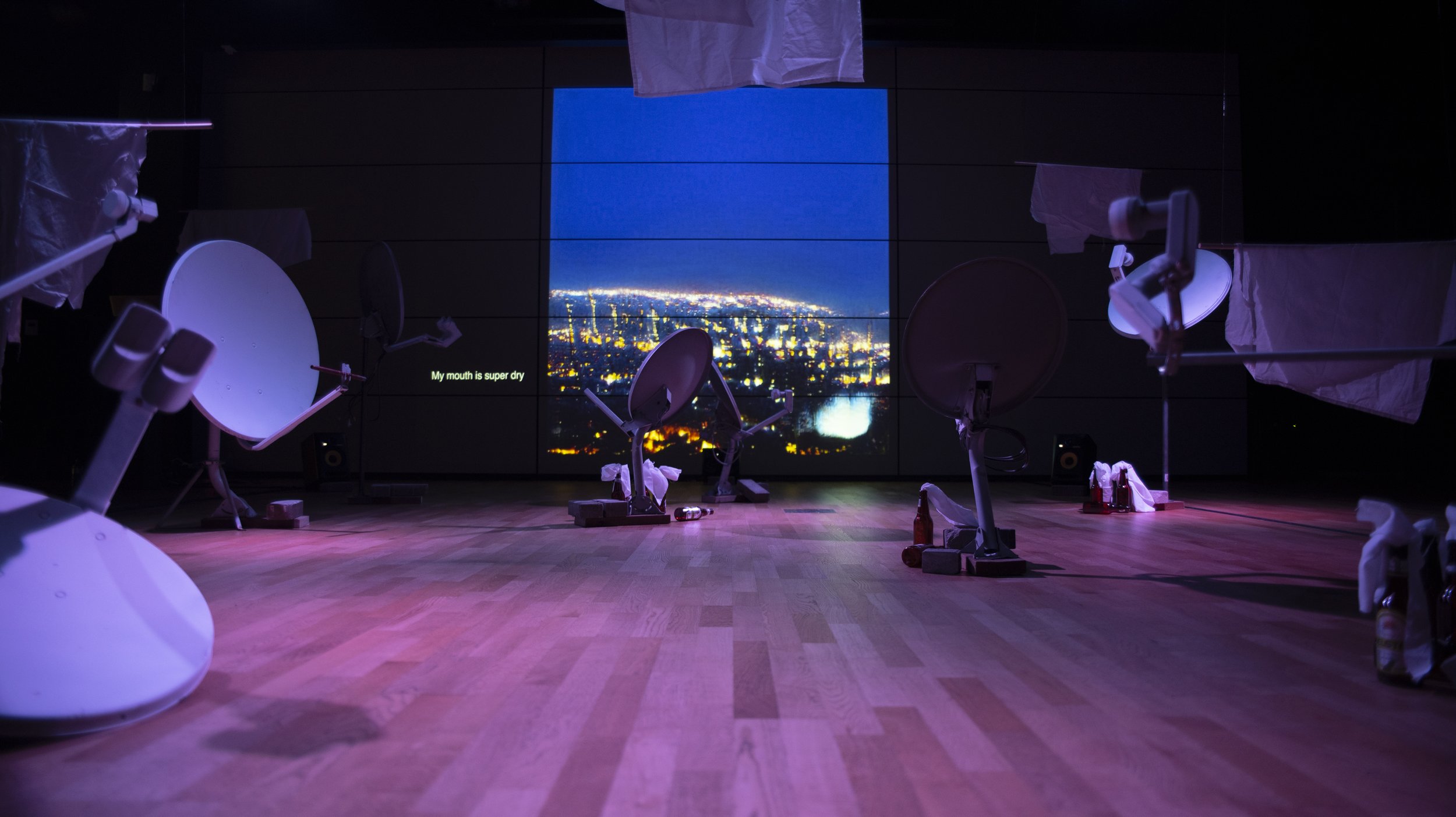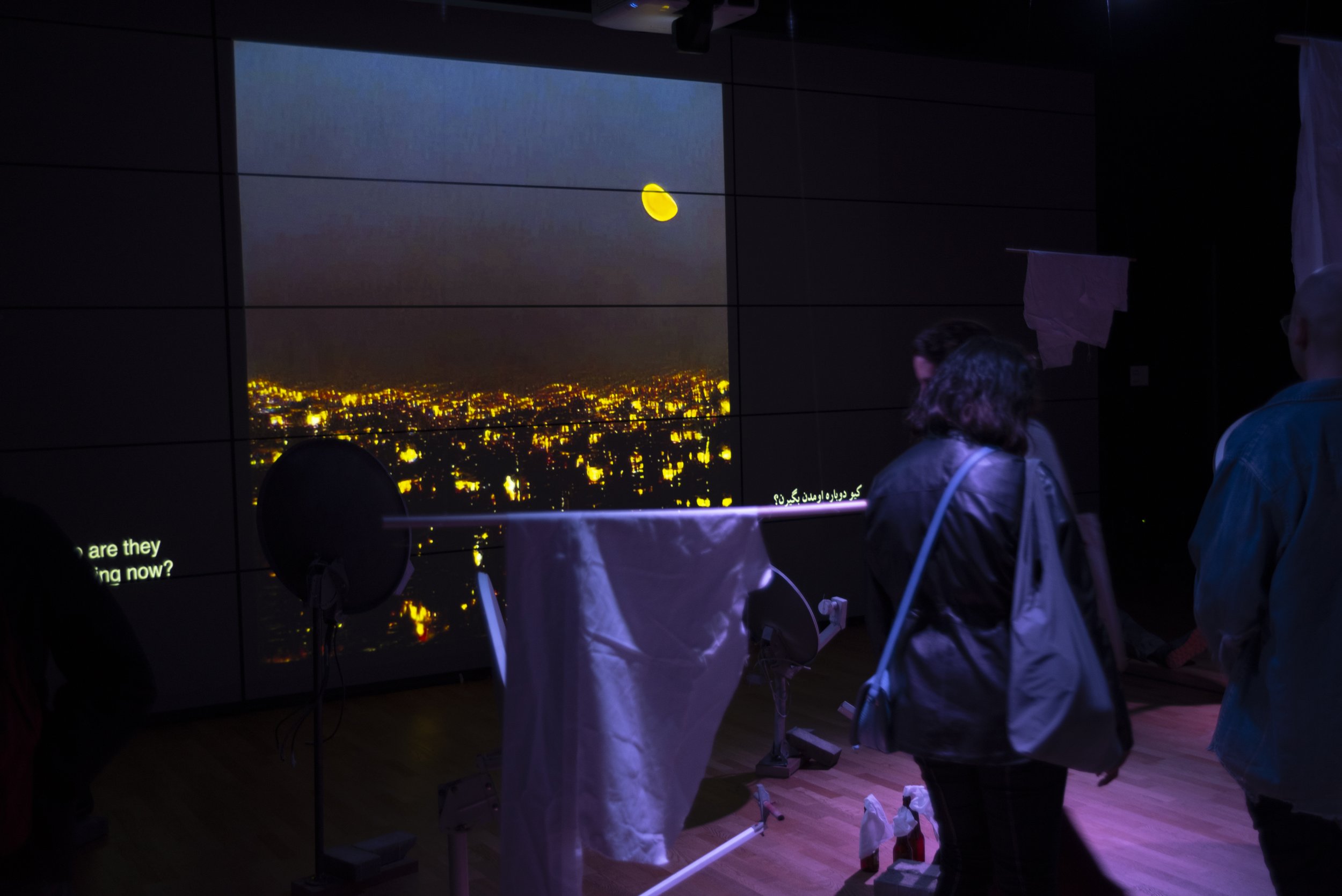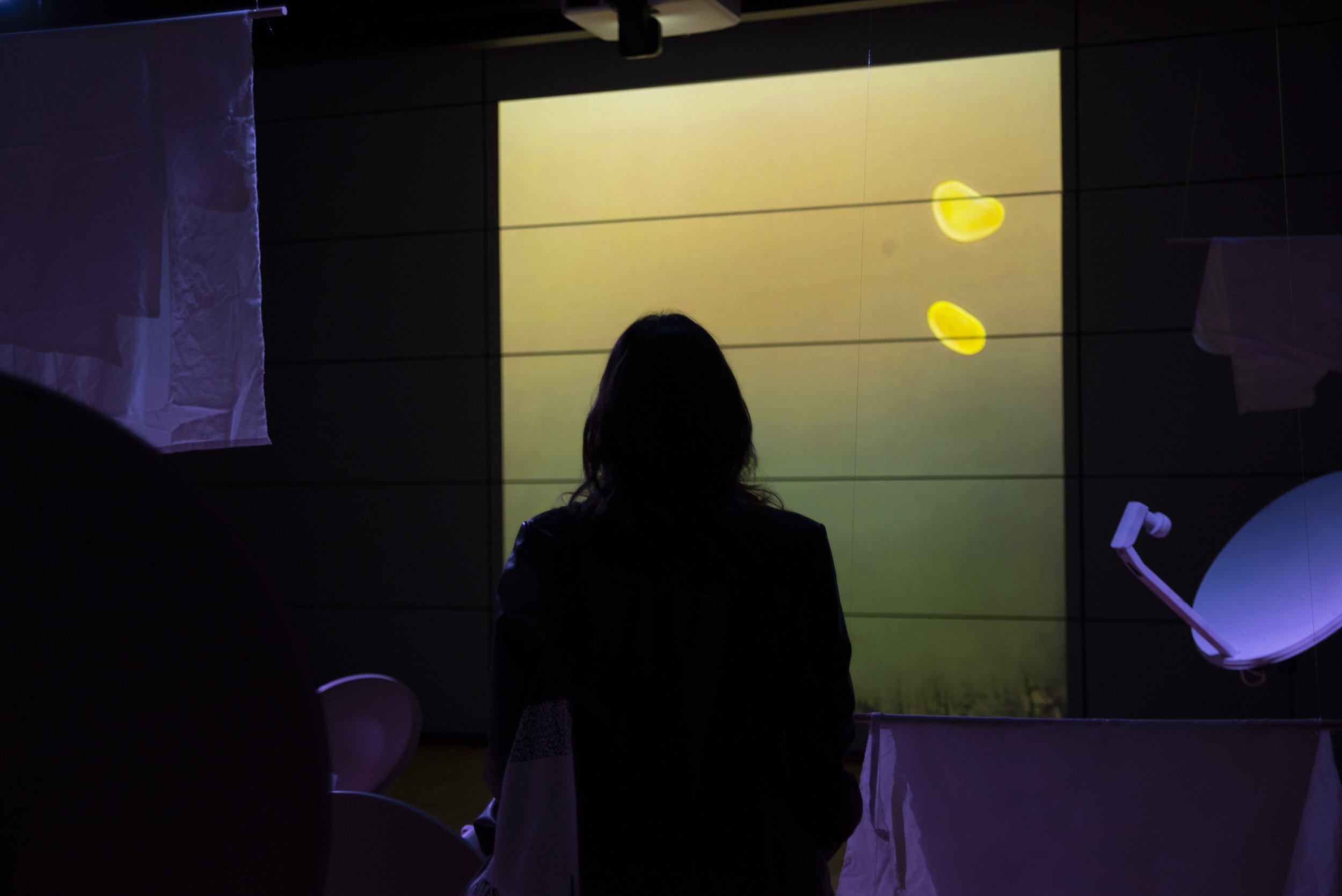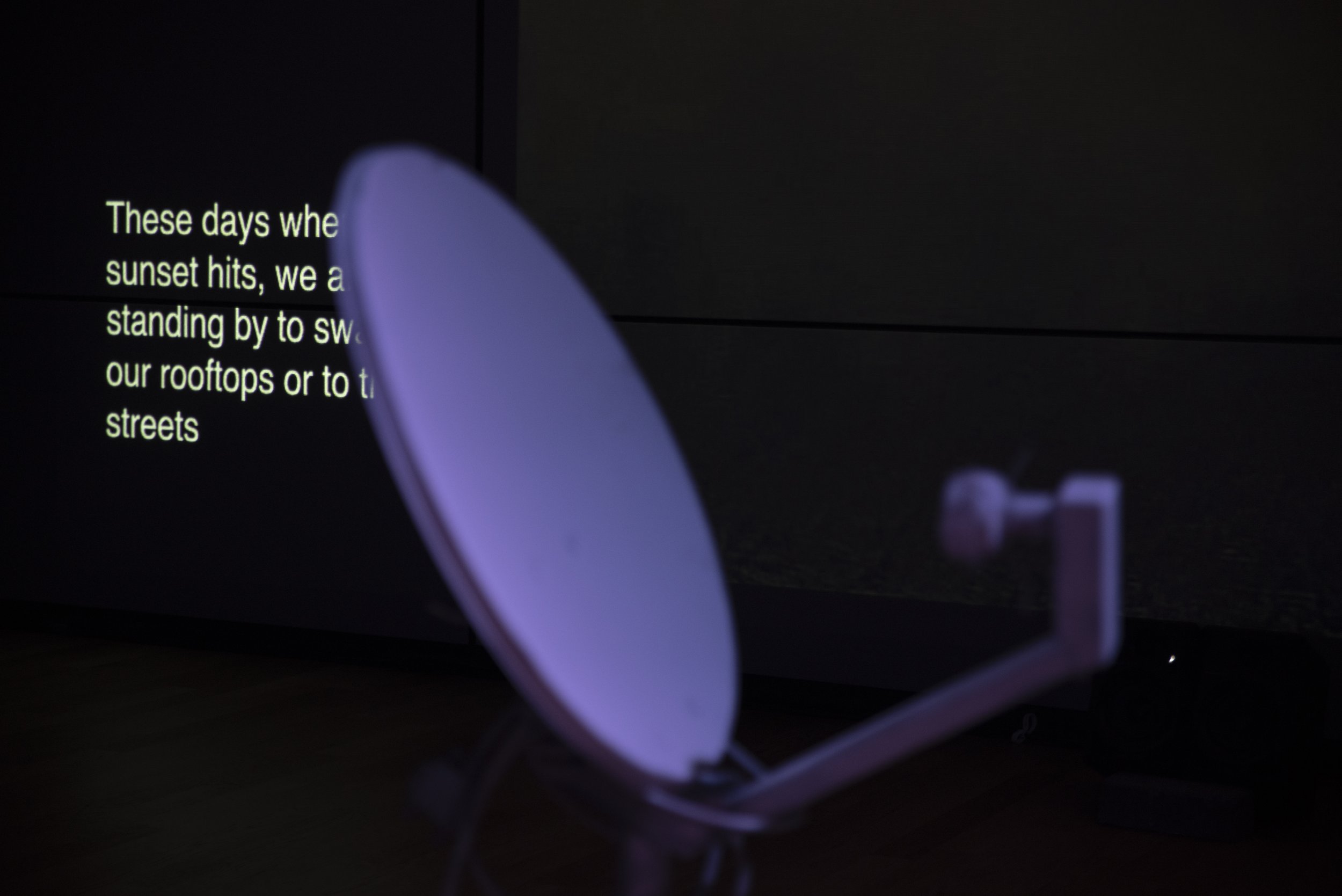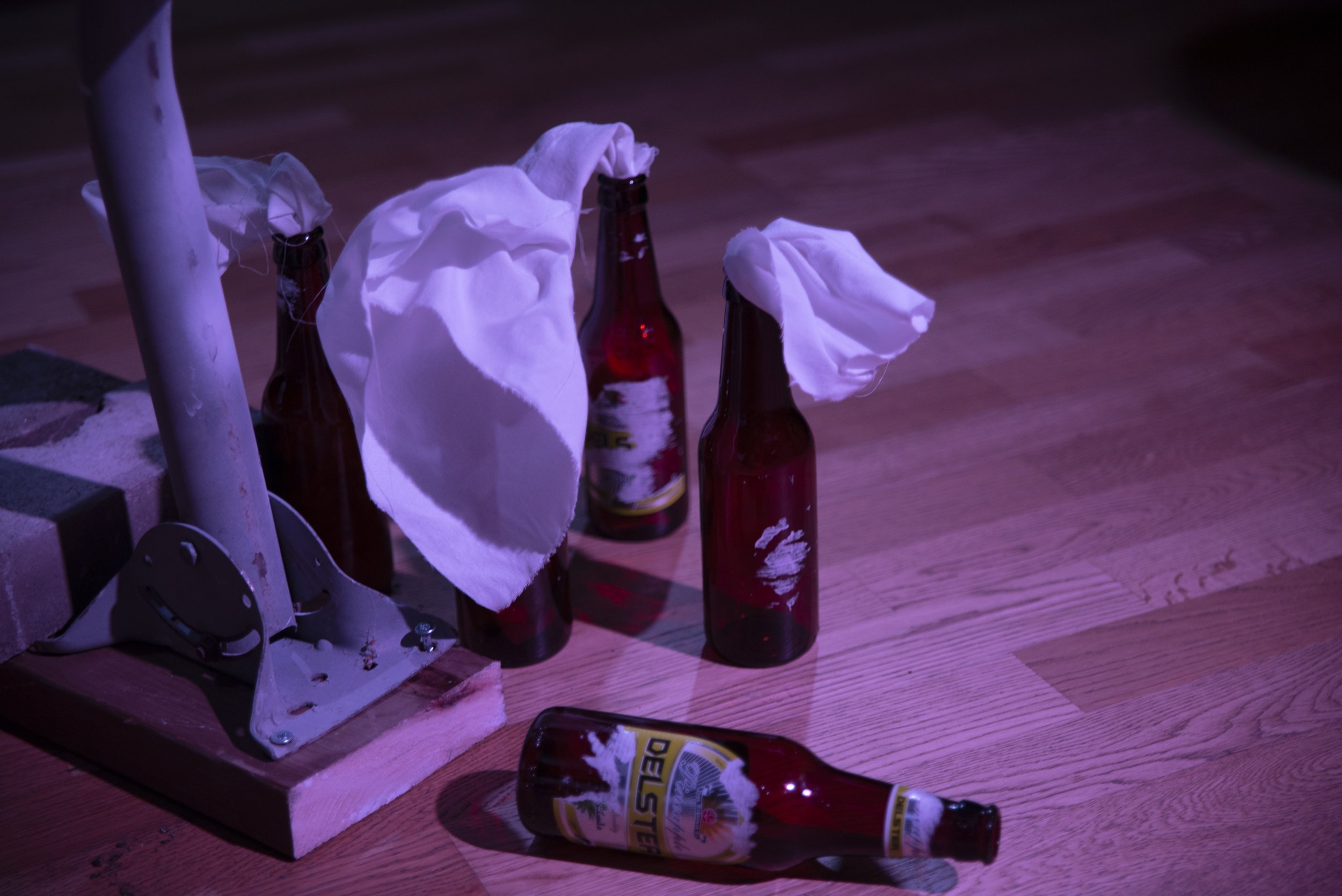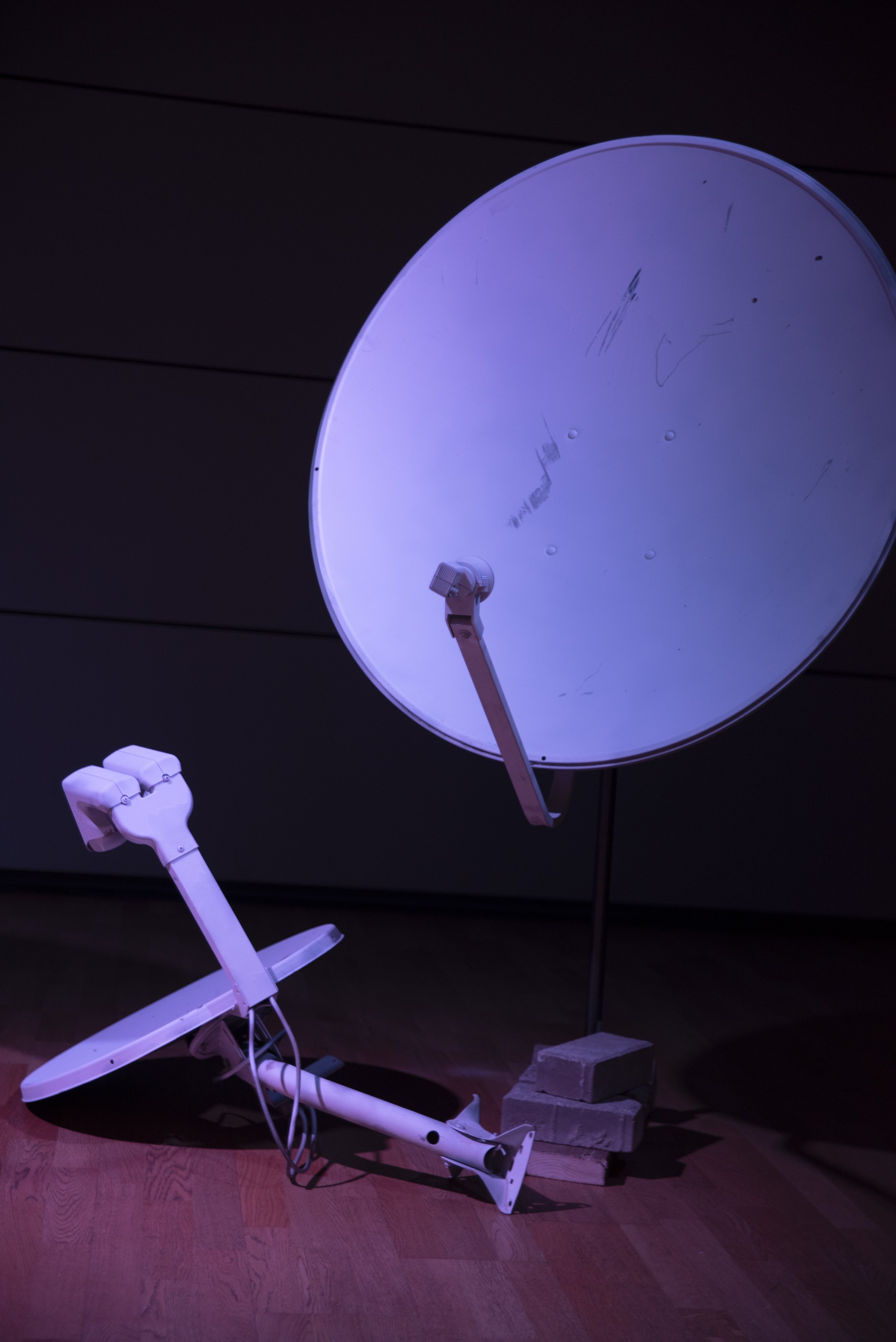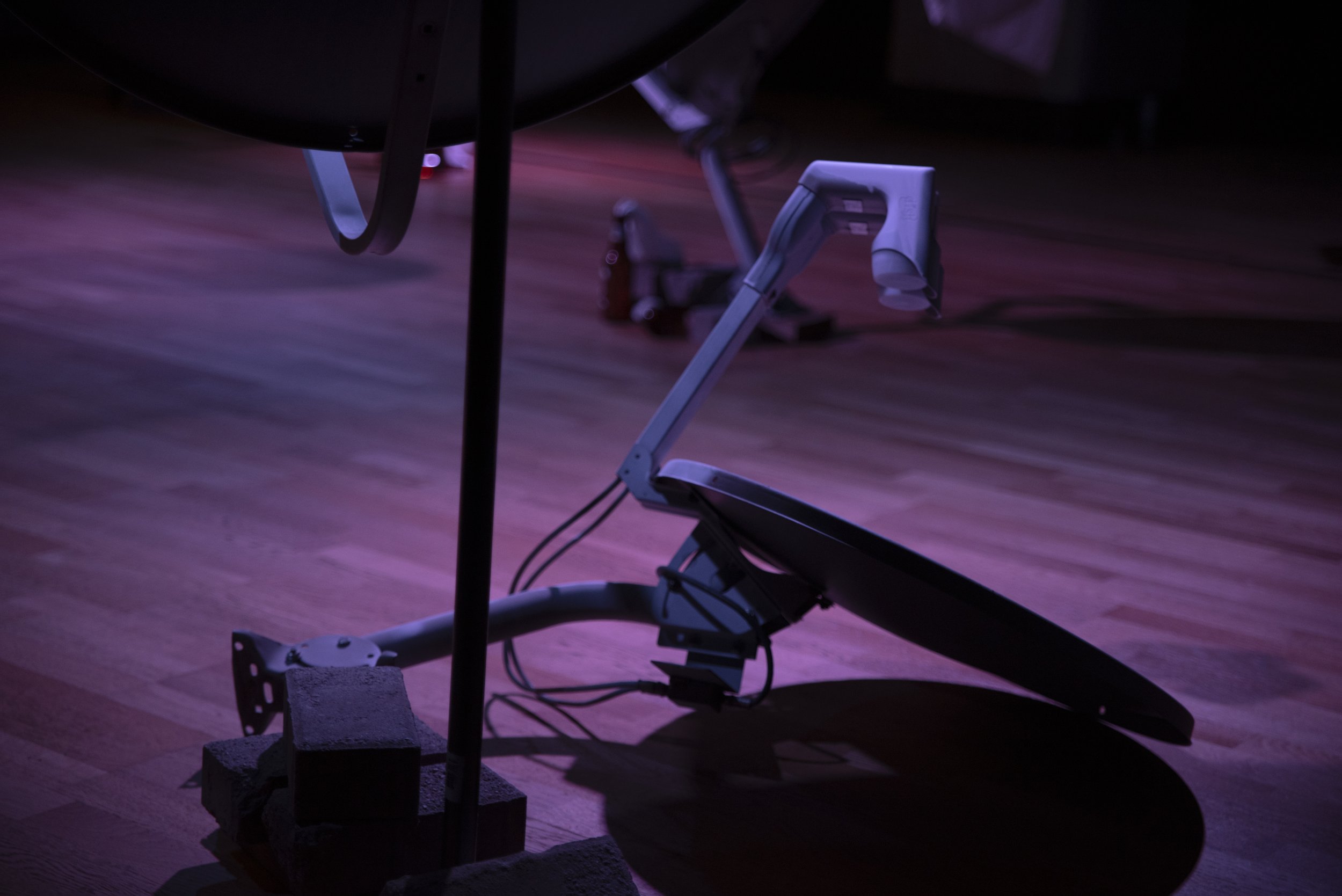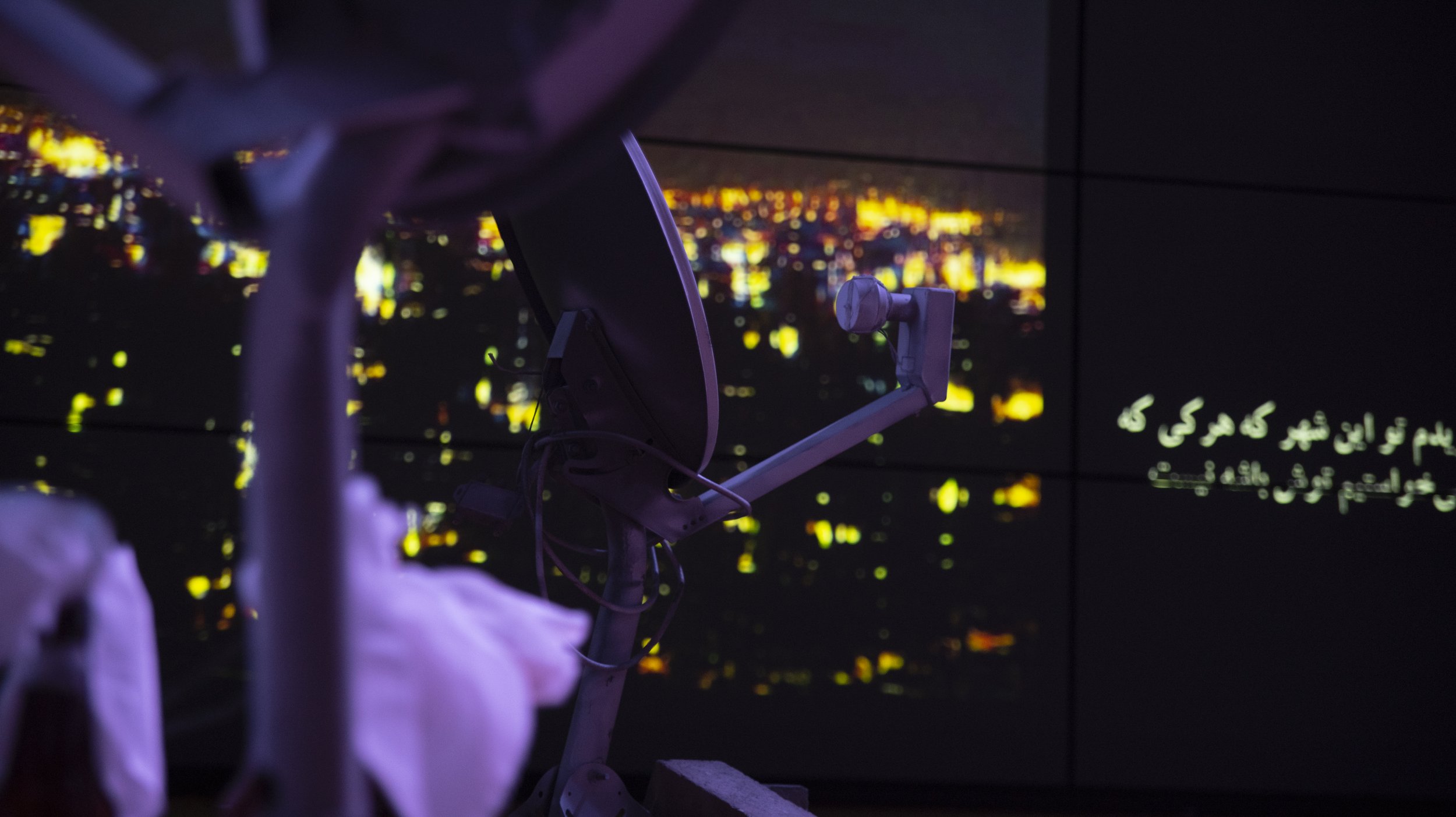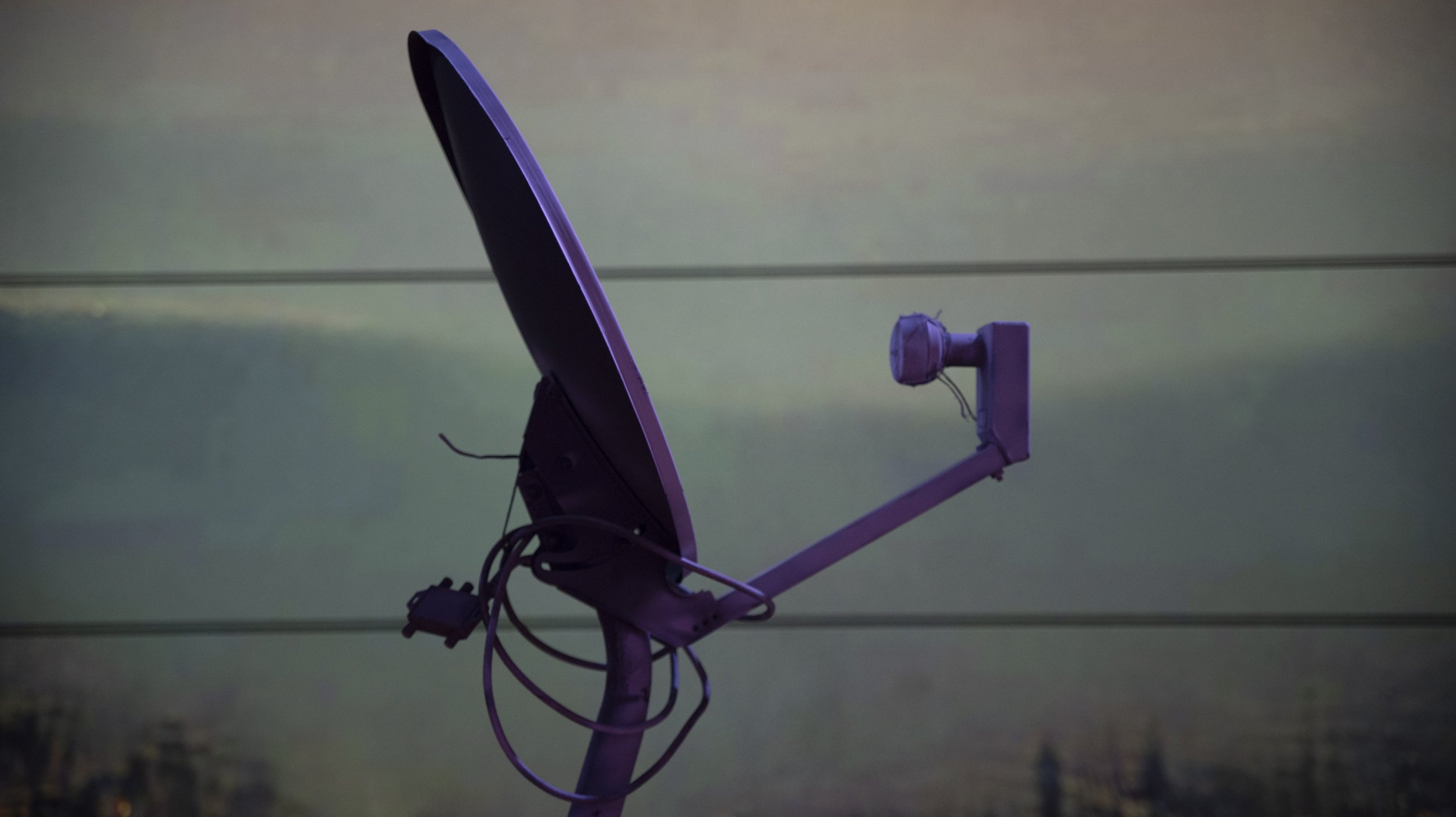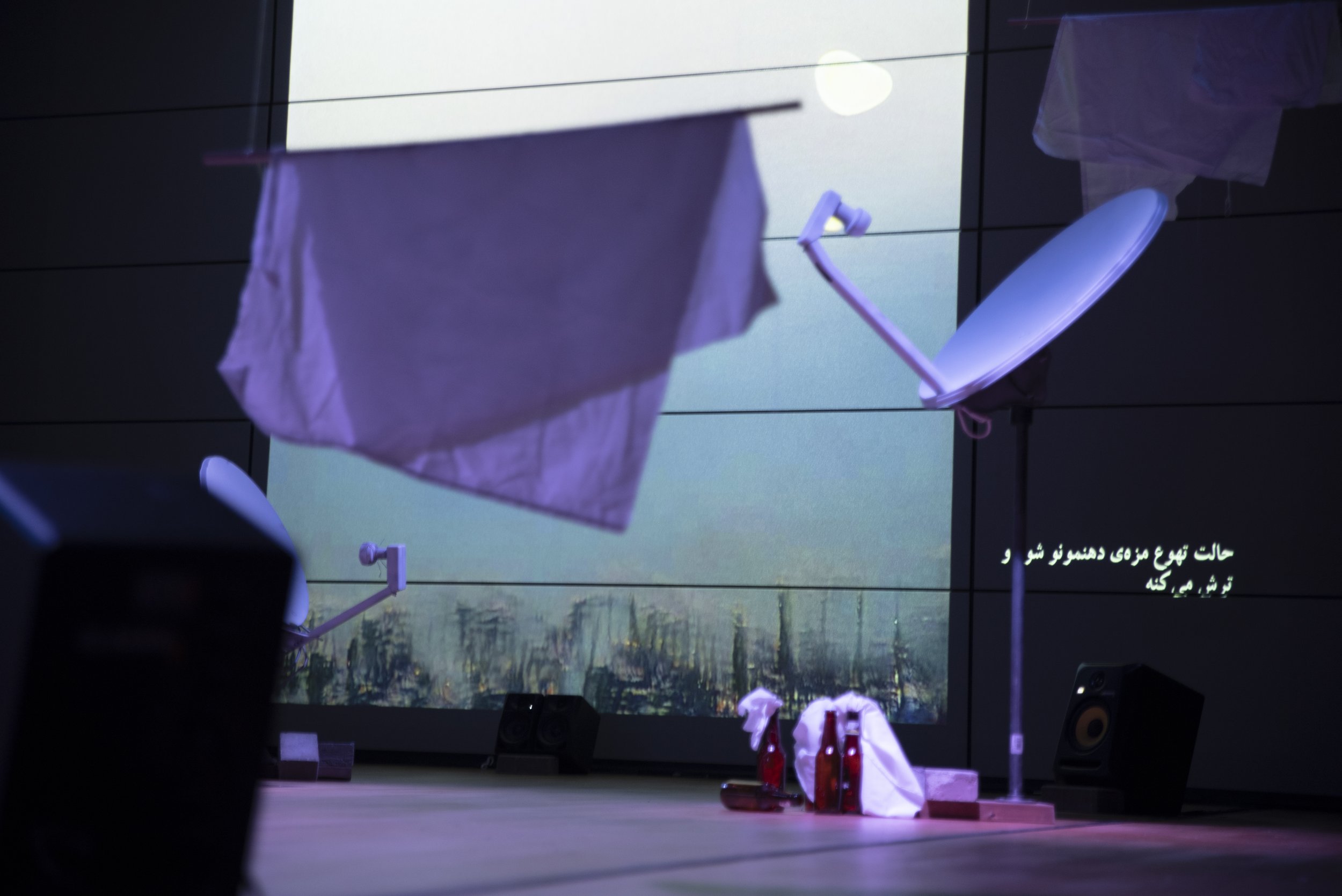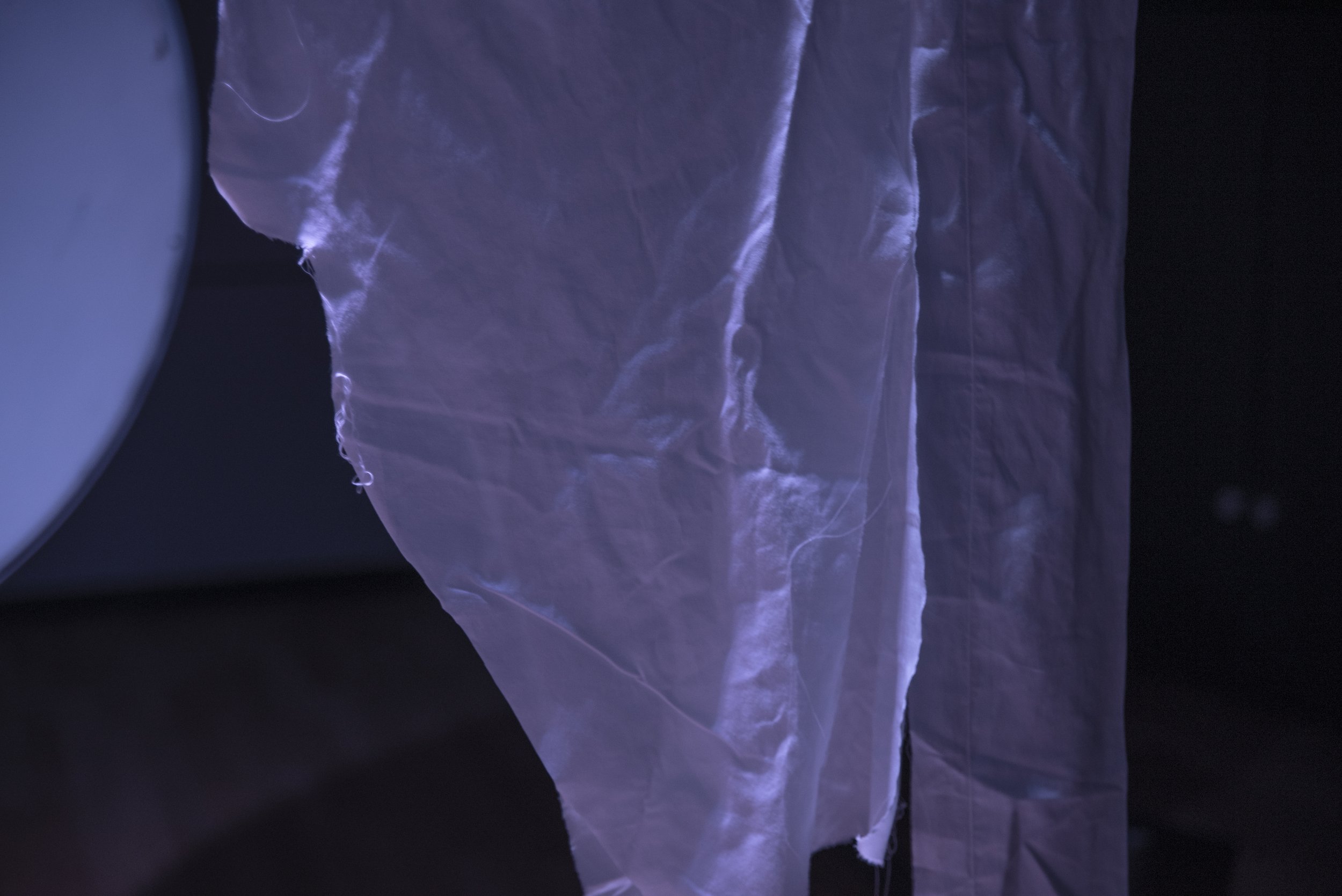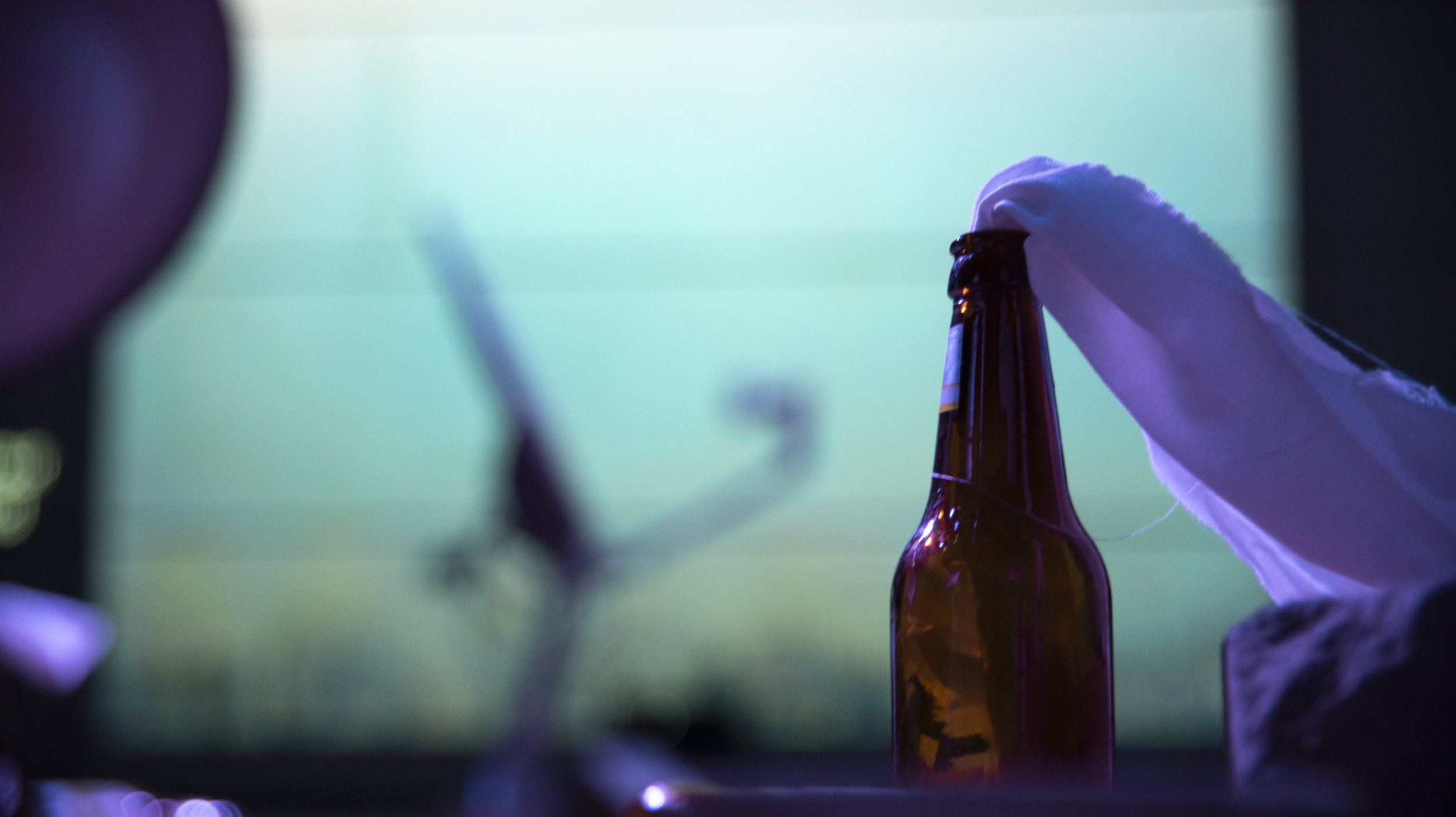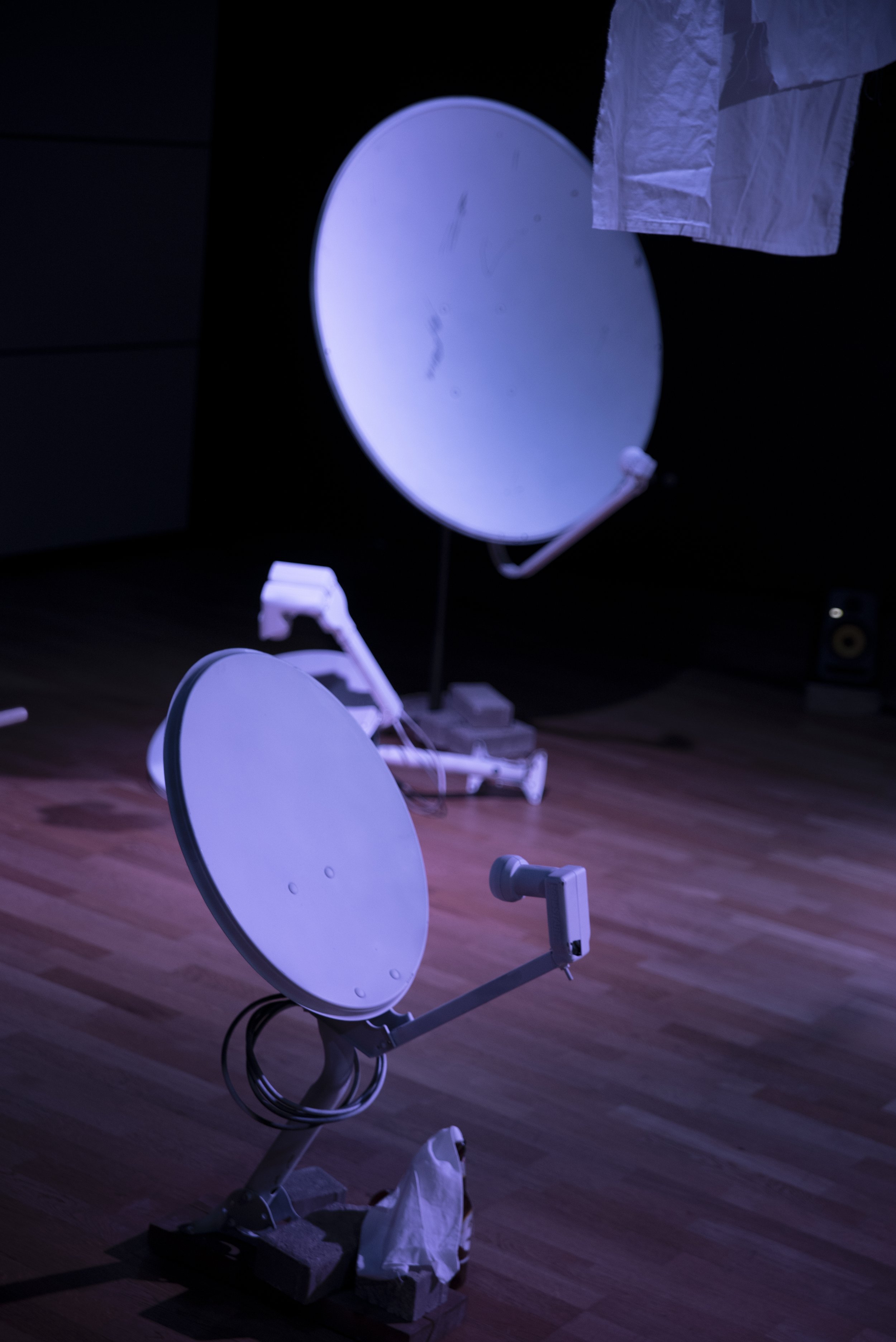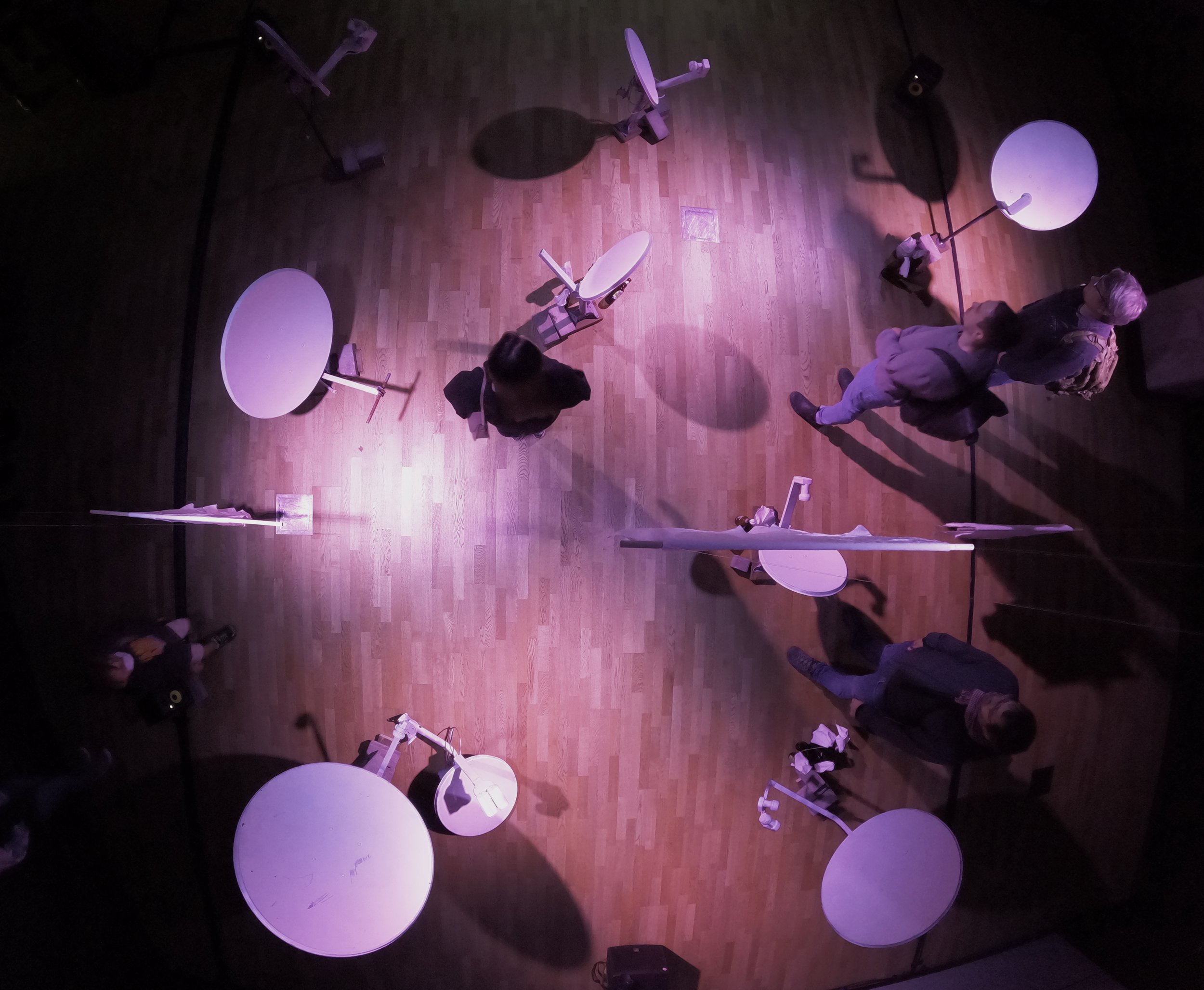
Iranian rooftops: Grounds for Resistance (2022)
multi-media installation
In collaboration with Koohyar habibi
fabrication by Eoin Salerno
AI-generated video loop of Sunset to Sunrise, 7.1 Surround Sound, Satellite Dishes, Cement Bricks, Cocktail Molotovs, Fabric, Wooden Dowels, Metal Poles.
Exhibited at Artscape Daniels Launchpad for Nuit Blanche 2022
In post 1979 revolution in Iran, protest, war, natural disasters, and devastation have become a part of people’s daily lives. From the Iran Iraq war that started 1 year after the revolution and lasted for 8 years, to the everyday war that people have with the government. In all the protests that emerge in Iran, rooftops have become a safer haven for the people. When the sun goes down, you can hear people’s chants from the rooftops and out their windows that accompany the people that are on the ground and they are fighting together against the oppressive regime. Rooftops have also been a place of privacy. In a country where its citizens are heavily policed and surveilled, rooftops are a place for people to put their satellite dishes, gather privately, and protest together.
In contemporary Iranian urban design, rooftops are underlooked and neglected, but people have turned these “wasted” spaces to grounds for resistance and political movement. With the death of Jina (Mahsa) Amini, rooftops have again become activated by people and in their bloody, brutal fight against the Islamic Republic regime. This Sunset to Sunrise looping installation imagines a surreal ascent of a group of young people in Tehran from the streets to the rooftop through the lens of the artist. It makes an attempt to portray the feelings of loss, confusion, nausea, duality, and the continued looping resistance of Iranians’ daily lives. Long live the displaced and the oppressed.
This work was made in collaboration with Koohyar Habibi who took on the sound design and recording of the project. Being Kurdish Iranian, in his work Koohyar engages with music as the preservation of cultural heritage and in an experimental approach. In his practice, he prioritizes texture, rhythm, and tone colour, over the traditional approach of composing melody and harmony. He uses electronic music as a medium for exploring "new" sounds. This gives space to musicians to discover and experiment with the qualities of "non-musical" sounds, and ultimately new musical concepts and structures.
ژن، ژیان، ئازادی
Woman, Life, Freedom

